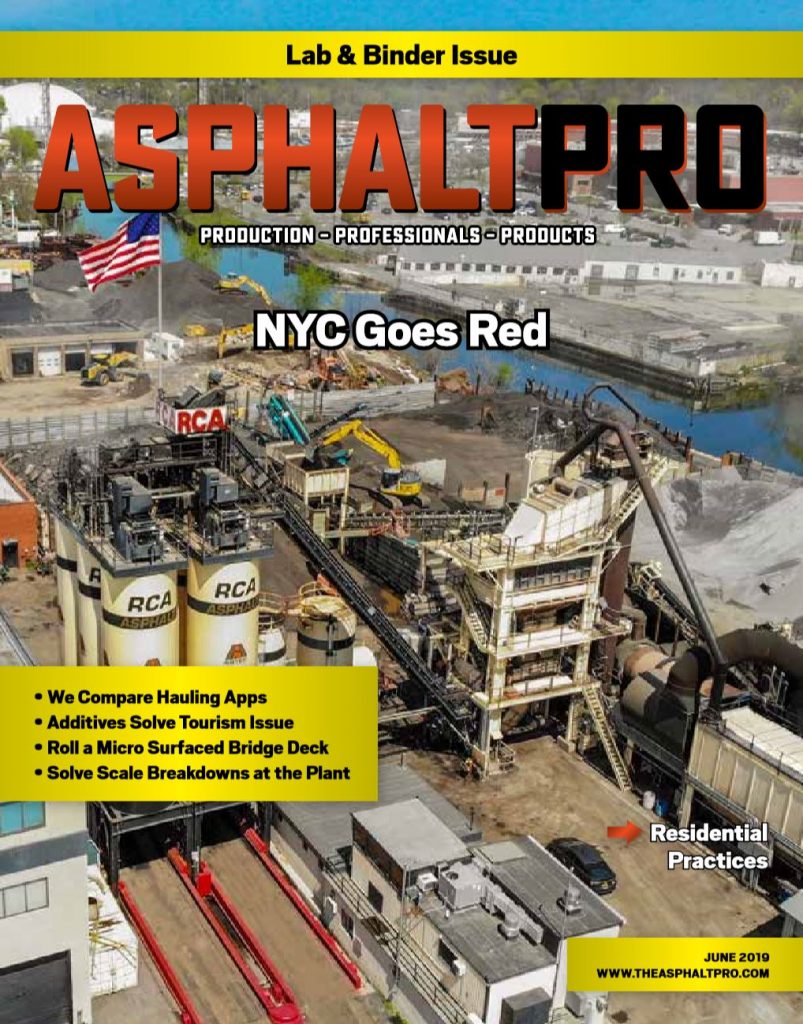
The concrete industry adds odd things to their mix to get a flexible pavement—like asphalt—but still full of their pricy ingredients.
Sometimes, it’s necessary to add an anti-strip, polymer or warm-mix additive to an asphalt mix design to augment the performance characteristics of the final pavement. This adds some cost to what you’re building, but the tradeoff, typically, is a longer-lasting pavement system for the end user. I tend to look askance at the oddities people want to add to mix designs. When you start talking about throwing pig feces or plastics into mixes, I wonder if the tradeoff has been studied properly, or if someone in a lab is getting overzealous about recycling.
For example, the concrete industry has caused me to snicker to myself more than once over the years with odd things they want to mix in with cement to make the gray matter do different things upon placement. The concept of adding very fine aggregates and polyvinyl alcohol (PVA) fibers to make a flexible casting is on the radar screen as of late.

Notice that the ECC bends without developing “large” cracks, according to the concretecountertopinstitute.com website, but it will develop cracks that are visible to the naked eye, as indicated by the red arrow I added. Photo from the website: concretecountertopinstitute.com
I found the most information about the “artisan concrete” from the Concrete Countertop Institute, leading me to wonder why an engineer would design a pavement from one’s lavatory. Whatever my thoughts on the subject, a professor of structural and materials engineering at the University of Michigan was looking for a form of concrete that could keep its strength after cracking, according to the CCI. Enter engineered cementitious composite (ECC), which is defined by the CCI as “a specialized form of concrete developed in the early 1990s by Dr. Victor Li.” ECC is similar to precast concrete in that workers mix it, cast it and take it to the location to be set in place, or it can be poured and cast-in-place. It includes cementitious binder, very fine aggregates and the aforementioned PVA fibers for movement. You’ll notice Professor Li worked on that back in the early 1990s, but the concrete industry is considering it for your roadways now. They want something flexible—like asphalt—but still full of their pricy ingredients.
Up north near Michigan, the Minnesota Department of Transportation (MnDOT) took a look at concrete cracking on bridges. In the technical report MN/RC 2019-09 published February 2019, Deterioration of Mixed Rebar and Fiber-Reinforced Concrete Bridge Decks, Authors Corin Treat and Benjamin Z. Dymond concluded that “[t]hrough-deck cracking may be a key indicator for future underdeck spalling of mixed bar decks since the cracks provide a clear path for the chlorides to reach the uncoated bottom mat.” What’s happening there is the 600 bridges constructed with two levels of differently coated rebars within the concrete are spalling and failing despite MnDOT’s efforts to protect the lower levels. They further conclude they should “[c]onsider a more robust crack sealing method such as flood coating with methyl methacrylate (MMA) or applying an impermeable wearing course…”
Look. Asphalt is already flexible and various asphalt membranes already represent impermeable barriers to prevent water intrusion to lower bridge decks where rebar rests inside the cracked and/or cracking concrete systems. Asphalt is the answer. If concrete is letting water in to rust and corrode your system, then take the concrete—whether it was doctored to flex after it cracks or not—out of the equation.
Stay Safe,
Sandy Lender
